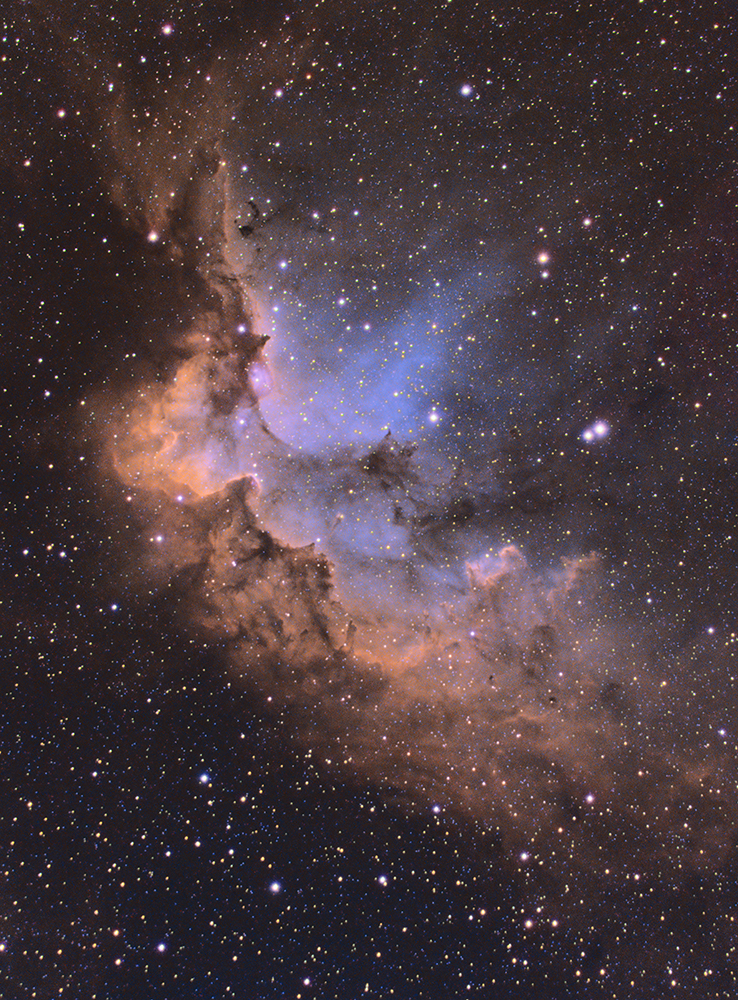NAME:
CATALOGUE:
OBJECT TYPE:
CONSTELLATION:
DISTANCE:
APPARENT MAGNITUDE:
APPARENT SIZE:
DIAMETER:
DISCOVERY:
BEST VIEWED IN:
RIGHT ASCENSION:
DECLINATION:
TELESCOPE:
DATA GATHERED:
EXPOSURES:
TOTAL TIME: |
|
The Wizard Nebula
NGC 7380 / Sh2-142
Emission Nebula
Cepheus
7,000 light years
7.2
30 x 25 arcminutes
60 light years
1787, Caroline Herschel
September
22h 47m 14s
+58º 01’ 58”
Celestron EdgeHD 800 & 0.7x Reducer
4 nights, August 2014
Hα = 14 x 1200s
OIII = 11 x 1200s
SII = 10 x 1200s
RGB = 3 x 600s each
12 hours 25 minutes |


